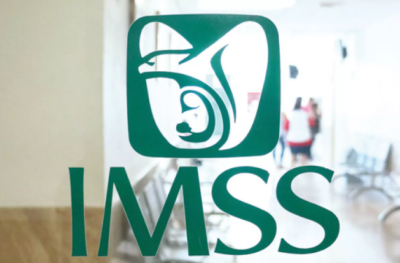So you’ve decided to embark on a new adventure and become an expat… Huzzah!
If you’ve aged out of your 30s, one thing that may strike fear in your heart is dropping a familiar health insurance plan, existing doctors, and even a trusted pharmacist when making the move.
Besides eating tons of avocados and mangoes… How will you protect your health (and wallet) after settling in Mexico?
I’ve encountered a handful of expats in Mexico who’ve opted to “go naked” or “self-insure” (i.e. no insurance) because they’re generally healthy and know that most healthcare needs can be taken care of here for low cost out-of-pocket.
It’s true that by not paying premiums or deductibles, there’s a lot of money left over for buying actual healthcare. Unlike the States, there are no barriers to accessing doctors or private health facilities in Mexico without insurance, as long as you bring the cash.
This approach can work out fine if your healthcare needs are mostly minor and preventive in nature. But a heart attack or cancer diagnosis without insurance can still cost a five to six-figure USD sum in Mexico, which is not something most people are prepared to deal with.
Self-insuring doesn’t work for me–but I can still sorta see the logic to it for those over 60 who are unable to find affordable policies without big exclusions for pre-existing conditions. (more on this below)
Assuming you’re interested in providing a health safety net for yourself, keep reading.
Eight Factors to Consider When Selecting Expat Medical Insurance
Healthcare decisions can be dauntingly complex. As such I suggest tackling it one step at a time, beginning with a basic needs assessment. Answering the eight basic questions below can help you more easily identify the right type of insurance for your needs.
1. Coverage scope. This is a biggie as it will heavily impact plan cost. A critical factor is whether you include or exclude the U.S. from your coverage given the exorbitant cost of care there. In addition, if you only need a solution for Mexico, options will look very different than for someone in need of multi-country coverage.
2. Time frame. Do you need insurance for just a few weeks or months? Or do you need coverage long-term, i.e. a full year or more?

3. Health status. Are you generally healthy or do you have serious pre-existing conditions? For most new policies, there are exclusions on pre-existing conditions for the first year. (Obamacare outlawed this discriminatory practice in the U.S. market, but unfortunately it’s alive and well with private insurance companies operating in Mexico.)
4. Your age. Anybody under 60 will enjoy far more health insurance options in Mexico than those who are older (especially those 70+) and at a much lower cost. No surprises there.
5. Lifestyle. Do you plan to travel outside of Mexico a lot, or are you generally someone who stays put (or travels mostly inside Mexico)? If you travel worldwide, a global policy is probably going to save you a lot of time and money over a patchwork of country-specific plans and traveler’s policies.
6. Budget. How much are you willing to spend on insurance premiums and deductibles? If your aim is to buy insurance for catastrophic events only, you can set the deductible high (e.g. $2,500 USD +) and pay lower premiums. If you prefer a lower deductible to ensure that you never get hit with an enormous unexpected bill, the plan will carry a higher premium.
One thing I’ve noticed with global private insurance plans is that they’ll give you a discount if you’re willing (and able) to pre-pay the 12-month premium all at once. If this isn’t feasible for you, it’s also typically possible to get a smaller discount by paying six months up-front. Paying the premium every month costs you the most. (If this sounds regressive to you, we’re on the same page)

7. Prescription needs. One of the great things about Mexico is how easy it is to obtain medications over the counter that require a prescription in the U.S. and at a significantly lower cost. Unless you’re taking some new drug just introduced or extremely potent, it’s likely that you will be able to fund most all of your Rx needs out of pocket without the need to involve an insurance provider (or visit the doctor first).
8. Coverage gap? Are you looking for a new plan having had no coverage in recent years, or are you dropping one type of coverage for another? For the plans I’ve looked at, there are some high hurdles, waiting periods, and additional exclusions for applicants with coverage gaps over the prior 12 months, because they’re seen as higher risk.
Types of Health Insurance Available to Expats in Mexico
Below is a round-up of the different kinds of insurance options available, with specific companies to check out in each category. Note that I’m not endorsing any particular plan or provider in exchange for a kickback (like most bloggers do).
I’ve reviewed Trustpilot scores for numerous companies and included only those with at least 3.5 of 5 stars, which is still no guarantee of a great experience but better than nothing.
1. Global private health insurance. Plans are generally offered worldwide, with a U.S. exclusion (saves you a ton of money), or worldwide, including the U.S. For what it’s worth, I know exactly no one who buys a worldwide policy with U.S. coverage included, given the exorbitant cost.
If you visit the States a few times a year and are concerned about traveling there without insurance, it’s far more economical to buy travelers’ insurance covering only the days you’ll be there, rather than over-insuring yourself with a 12-month plan valid in the U.S.
I’m currently covered by an IMG plan called “Silver Area 2” with worldwide coverage excluding the U.S., Canada, and parts of East Asia, with a $1,000 annual deductible. The total premium is $1,754 USD in 2023, or a little less than $150 per month, with a payout cap of $5 million USD.
This IMG policy stood out to me for including up to 30 days of coverage inside the U.S. annually, a nice feature that eliminates the need to buy separate traveler’s health coverage when I visit the States. The VUMI Expat Gold plan I had previously lacked this benefit.
For global policies like the ones described above you face few restrictions when seeking care in Mexico. Unlike the U.S., private insurance plans in Mexico do not have “in-network” providers you are obligated to use to avoid paying exorbitant prices.
You can use any private facility you want, though some plans have blacklisted a small number of Mexican hospitals notorious for gouging customers, and place strict limits on the amount they will reimburse if you choose to use these facilities. (most of them are in Mexico City or popular tourist towns)
Companies worth checking out for global policies are Axa Health, Cigna Expat Health, IMG, and VUMI.
2. Mexico-only private health insurance by Mexican providers. If you’ve relocated to Mexico and travel minimally, or intend to travel inside the country most of the time, a Mexico-only policy is the way to go.
Plan pricing isn’t publicly available but quoted on a case-by-case basis. Your cost is a function of your age and health profile.
While these plans are far more economical than individual policies purchased in the U.S., they also exclude lots of pre-existing conditions, a practice that’s illegal in the U.S. but still perfectly legal here. And unfortunately, I uncovered many stories in the expat community of local insurers going to great lengths to tie claims to plan members’ pre-existing conditions to avoid paying for them.
Like global plans, you’re typically free to see whatever doctor you want on these plans, but accessing the best private hospitals often carries a higher premium.
Companies to check out for Mexico-only policies: GNP Seguros, Seguros Monterrey.
3. National public health insurance program (IMSS). Both temporary and permanent residents in Mexico are eligible to apply for coverage under Mexico’s public insurance system. The cost to use the program varies by age, with participants restricted to using IMSS hospitals and doctors.
An estimated 70% of Mexican citizens are covered by IMSS. Because IMSS is funded out of Mexican private sector workers’ wages, which are pitifully low, the quality of care is not remotely comparable to Mexico’s private healthcare sector. (Mexico’s federal public employees are covered by a different entity known as ISSSTE)

While quality of care reportedly varies a lot by location, one thing most people agree on is that demand for IMSS services perpetually exceeds supply, with equipment, medicines, and staffing all falling below what’s truly needed. In addition, English is rarely spoken and wait times can be long for surgeries or serious conditions.
At IMSS hospitals, nurses are known to take patients’ vitals and give medicines — nada mas. Family members are expected to provide a patient’s meals and see to hygienic needs.
Applying for IMSS coverage with pre-existing conditions like cancer, HIV, congenital diseases, drug addiction, or mental illness leads to automatic rejection. And even after you’re admitted IMSS excludes coverage for lesser pre-existing conditions over the first two years to varying degrees. Only in year three are participants fully covered.
While it’s fortunate that Mexico has a public health system for its general population, given the limitations of IMSS coverage, I’d say without hesitation that you should opt for private insurance if you can possibly afford it.
IMSS premiums in 2023 for those in their 30s are roughly $600 USD per year ($10,950 MXN), escalating to ~$1,050 USD ($19,050 MXN) per year for participants 70+.
4. Traveler’s health insurance.

These policies are typically very cheap (as low as $3-4 USD per day) with no deductibles, albeit with more restricted coverage and payouts, because they’re intended for catastrophic events. Exclusions may apply for high-risk activities like free climbing, heli-skiing, and skydiving.
Digital nomads and anyone taking extended trips through Mexico (but not yet settled) should look into getting a traveler’s insurance policy.
Companies to check out for traveler’s health insurance: SafetyWing, Genki, World Nomads
For those keeping some type of coverage in the U.S.
If you have Medicare in the U.S. (Part A allowed, Part B not legal for expats) you may be well served by enrolling in IMSS coverage for basic care (or going naked!) and buying a Medical Evacuation Plan for serious situations where you prefer to get care in the U.S. instead of Mexico. Note that evacuations are not supported for routine care. That must still be done in Mexico. Companies in this space include SkyMed, MetJet Assist, and Global Rescue.
If you’re eligible for a private plan through a U.S. employer, I’d advise you to keep it for peace of mind when traveling for work or play in the States, but skip things like vision and dental coverage. These things are so affordable in Mexico that covering them out of pocket is the most economical way to go for the vast majority of expats.
Should you use an insurance agent to buy in Mexico?
While it’s not essential to use one when buying insurance, I do think an agent can save you tons of time and potentially money as well. If you decide to use one, please vet them thoroughly as quality is not assured.
Things to look for in a broker include:
-
- They’re licensed and experienced
-
- Have deep local market expertise
-
- Are bilingual in Spanish & English
-
- Are able to sell plans across a range of providers
-
- Have detailed knowledge of plan details and premiums
-
- Are available to answer your questions when you need them
-
- Can guide you through the application process and provide forms
Conclusion
For most expats, Mexico offers a wide range of healthcare options at a reasonable cost. But I won’t sugarcoat it — health decisions do get more complicated here as you age, and may alter your cost/benefit analysis of whether to buy insurance.
In the end, there’s really no better health insurance than staying active, eating fresh food (mostly plants), and surrounding yourself with a supportive community of friends. Fortunately, this is the easiest — and best — type of “insurance” to find in Mexico.

